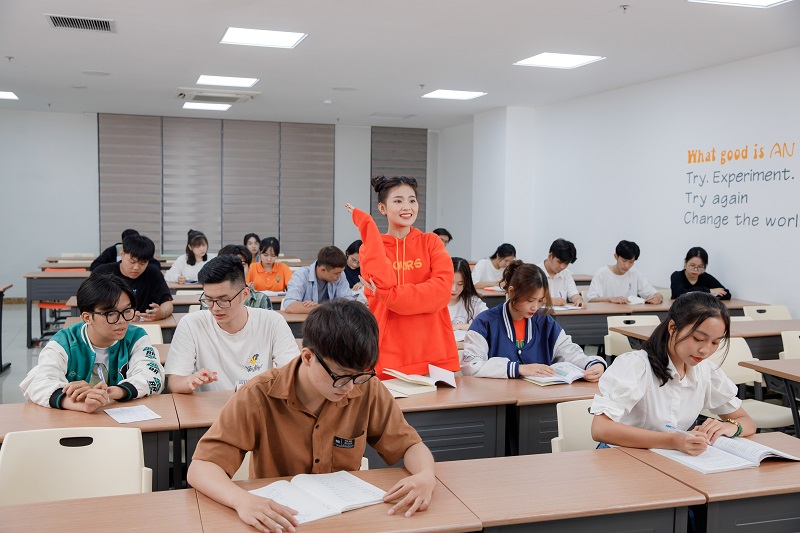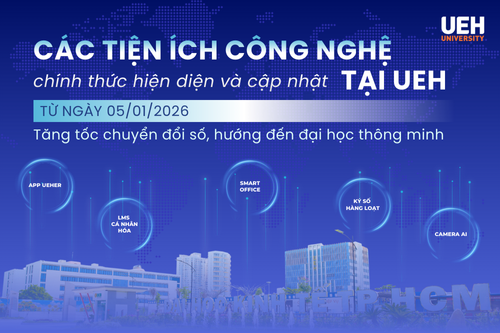
Vietnamese Students' And Teachers' Perceptions Of EFL Classroom Assessment
07 Apr, 2023
This study investigates Vietnamese university EFL teachers’ and students’ beliefs and teachers’ practices regarding classroom assessment. Results show that Vietnamese teachers were generally aware of the importance of classroom assessment and dominantly used interactive scaffolding and performance assessment. Vietnamese students generally preferred formative assessment and some assessment activities (e.g., group work), while the teachers believed that summative assessment could engage students in learning and drew an analogy between performance assessment with summative assessment.

Second language education research has been experiencing a growing interest in classroom assessment. Classroom assessment or classroom-based assessment can be employed to give grades, certify students’ academic record, and improve teaching and learning. While summative assessment is mainly used to measure students’ achievements, formative assessment, known as the teacher’s use of artifacts and activities to understand learners to help them learn, is well documented as to enhance the learning outcomes, motivate students to learn, and improve the teacher’s performance. In the classroom, these two types of assessment can be integrated coherently at different stages of teaching to enhance students’ achievements and reduce potential adverse impacts of grading.
However, simply adopting classroom assessment models constructed in Western cultures and applying them in Asia, including Vietnam, are an example of overgeneralization as people in these different contexts may have different learning cultures. Asian students may hesitate to get involved in public discussions because having no answer or giving an incorrect answer can threaten face. Also, the specific characteristics of L2 (second or foreign language) assessment have motivated applied linguists to localize the classroom assessment framework.
This study is, therefore, timely and aims to shed light on how the L2 classroom assessment framework should be adapted concerning the contextual factors of Vietnam. It explores Vietnamese university EFL teachers’ and students’ beliefs and teachers’ practices regarding classroom assessment. It employed a mixed-methods design. Teachers and students from different Vietnamese universities were invited to participate in the study. These universities applied a similar assessment policy: 40–50% of the total score for classroom assessment, and the final test, administered by the institutions, made up for the rest. Teachers could decide on test forms and content to give scores regarding classroom assessment. The popular choices were attendance, midterm tests, quizzes, and presentations. Questionnaires, semi-structured interviews, and classroom observations were deployed to collect data.
Data collected from classroom observations show that the teachers employed interactive scaffolding and performance assessment the most frequently. Scaffolding, according to the current literature, can be used to support students’ uptake in L2 classrooms. It is essential to note that the more the teacher scaffolds students, the more contingently controlled the students may feel. In other words, teachers’ use of scaffolding should depend on students’ current competences. It might be necessary for teachers to diagnose students to understand them and their learning before they use scaffolding in L2 teaching. However, the teachers used diagnostic assessment relatively marginally in the classroom. It is well-documented that diagnostic assessment can engage students in learning, providing teachers with information about students’ learning problems from which they can suggest remedies. Also, there was no evidence of the teachers’ use of self-assessment and peer assessment. Self-assessment and peer assessment may mediate the learning process. As a goal-oriented approach, L2 self-assessment may help students monitor their own learning and enhance their responsibility for learning in the long run. Also, peer assessment assists students in exchanging opinions. It academically benefits both students who serve as assessors and students who are assessed.
Data collected from the questionnaires and interviews give insights into students’ and teachers’ beliefs. Data collected from the questionnaire show some significant discrepancies between the beliefs of students and teachers about teacher scaffolding and performance assessment. Interview data provide interpretations of such differences. While the students associated performance assessment with summative assessment due to their experiences with teachers’ practices in the classroom and indicated their preferences for formative assessment, the teachers viewed performance assessment as a tool of summative assessment that could save time by engaging students in one test. This finding confirmed the observation data that the teachers used performance assessment as a summative assessment tool. It is crucial to address that performance assessment can be conducted formatively. Accordingly, teachers may provide constructive feedback to support learning. Also, performance assessment can provide evidence of a wide range of skills which teachers and students may use to plan remedial actions.
Performance assessment was one of the biggest concerns. Most students believed that tasks, exercises, quizzes, and short tests should be used as tools for teachers to understand students and find appropriate remedies to support the learning process rather than to give scores and grades. In other words, they preferred classroom assessment to be prone to formative rather than summative assessment. They responded that the use of summative assessment sometimes made the classroom tense. Also, most of them did not think that the scores and grades reflected their competences. That is, they did not trust the reliability and validity of the summative assessment in the classroom. All of them realized that different teachers administered tests at different levels of difficulty even though they taught at the same level.
The results also indicate that the students preferred interacting in small groups to speaking to the whole class. It is important to note that peers can interactively support each other in learning. They may feel more confident when they interact with peers than when they interact with teachers. Also, the students were concerned about their teachers’ grading fairness. Fairness is a complex and salient issue in a summative component of classroom assessment as it reflects teachers’ beliefs and assessment literacy. In the summative component of classroom assessment, it has been provoking ongoing debates. As classroom assessment is context-sensitive, L2 classroom assessment practices should take into account sociocultural factors. However, it should be used to engage students in learning rather than force them to learn. Appropriate use of classroom assessment may increase students’ satisfaction and motivate them to learn; otherwise, it can cause anxiety in the classroom. As Asian students are generally emotionally charged, they may withdraw from the classroom activities when they feel demotivated or lose face. It might be essential for educational institutions to have a test bank and grading criteria to ensure reliability and validity if they want to include summative assessment in classroom assessment. Also, while male students preferred self-regulated learning (self-assessment), female students preferred interactive assessment. This finding provides a reference for Vietnam and similar contexts. Teachers may consider this finding to justify the classroom assessment framework. When teachers identify any incongruences between teachers’ and students’ beliefs, they can elicit such differences to students to improve students’ behaviors in the classroom and promote the learning outcomes.
The findings suggest implications for classroom assessment practices in Vietnam and similar contexts. Regarding the sociocultural issues raised by the students, it might be necessary to adapt classroom assessment theories to suit the learning culture of Vietnam. The success of classroom assessment partly depends on students’ emotions. They need to feel safe to receive and provide feedback, resulting in improvement in their competences. Rapports between teachers and students and between peers may prevent students from feeling criticized and annoyed when they receive less positive feedback. It is students’ attitude towards feedback that can contribute to their development of knowledge and skills. In other words, the more constructive they find feedback is, the more willing they are to receive and provide it. Thus, it is important for language teachers to consider sociocultural factors to modify classroom assessment literature to suit the context.
Two limitations can be seen from this study. First, driven by the research questions, this study mainly investigated teachers’ and students’ beliefs and practices concerning L2 classroom assessment. Further studies can explore the effects of classroom assessment types and tasks on students’ academic achievements. Second, because the current study was confined to the context of Vietnam, the findings mainly reported beliefs and practices of classroom assessment at the tertiary level in the context. Future research can investigate how classroom assessment is conducted at other education levels and in other contexts.
This study extends the current classroom assessment literature. As classroom assessment is context-bound, it might be necessary for teachers to consider contextual factors to justify the classroom assessment framework. Summative assessment, if included in classroom assessment, can be performed formatively. That means teachers can use students’ academic achievements to give feedback on what students should do and how they should do it to facilitate the learning process. In terms of the reliability and validity of summative assessment, institutions may need to have a test bank and educate teachers in assessment literacy.
Please view the full paper titled Vietnamese university EFL teachers’and students’ beliefs and teachers’ practices regarding classroom assessment at HERE. Author: Dr. Bui Phu Hung - School of Foreign Languages, University of Economics Ho Chi Minh City.
This article is in the series Spreading research and applied knowledge from UEH with “Research Contribution For All - Nghiên Cứu Vì Cộng Đồng” message, UEH cordially invites dear readers to look forward to the upcoming Knowledge Newsletter ECONOMY #69.
News, photos: Author, UEH Department of Marketing and Communication






![[Contribution Research] How Ho Chi Minh City students’ green product consumption is affected by application iCTs innovation nowadays: A case for business to enhance green product consumption by understanding the role of environmental concerns, green consumption value and perceived effectiveness](/images/upload/thumbnail/ueh-thumbnail-639044087939815424.png)



![[Research Contribution] Determinants impacting young consumers purchasing behavioral intention on sustainable fashion: exploration in Ho Chi Minh City](/images/upload/thumbnail/ueh-thumbnail-639035712273480983.png)



